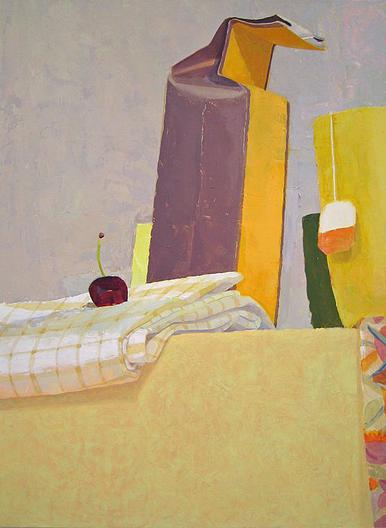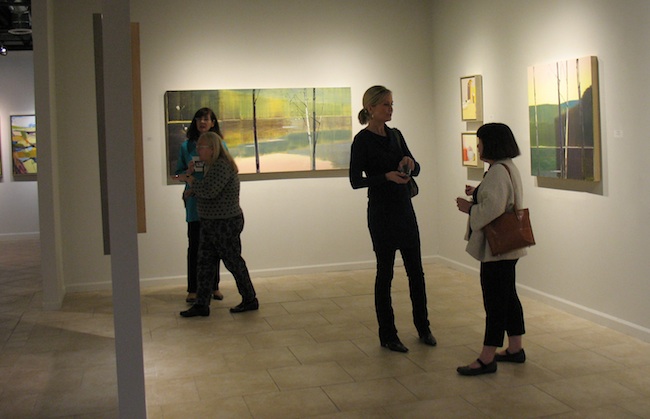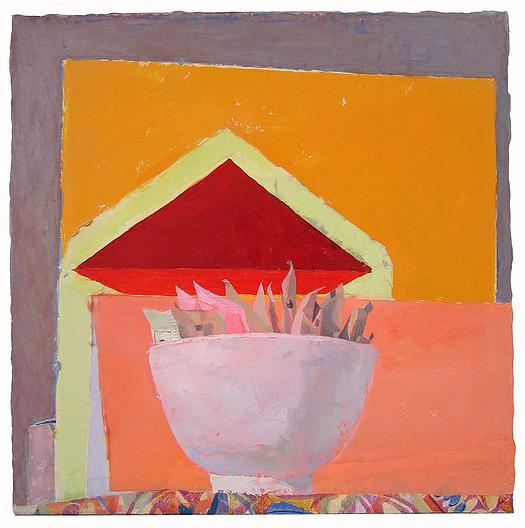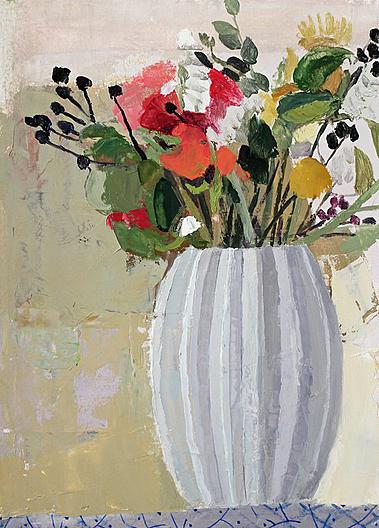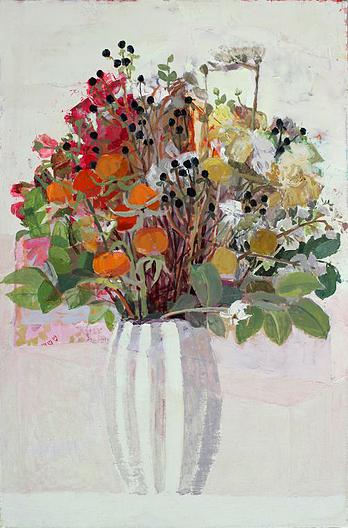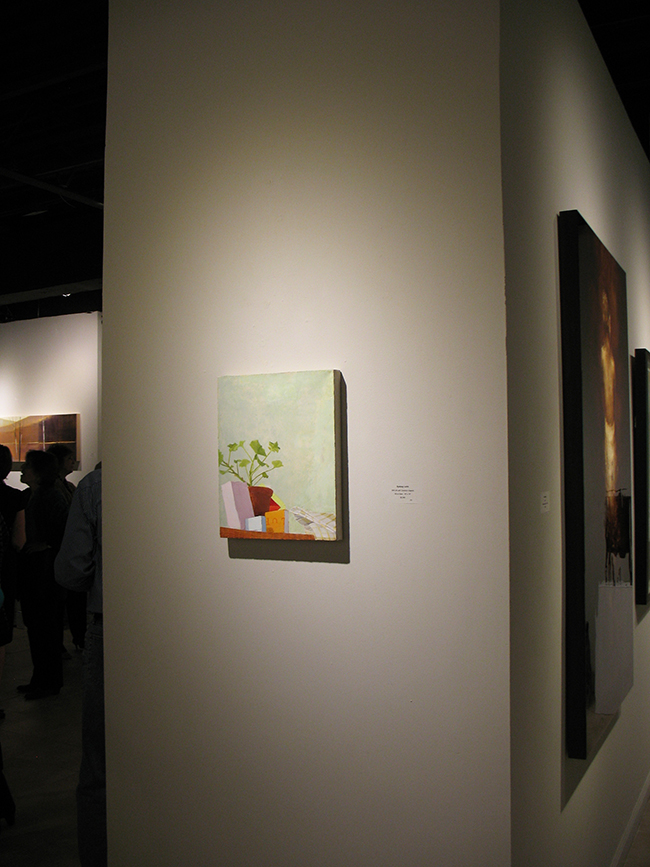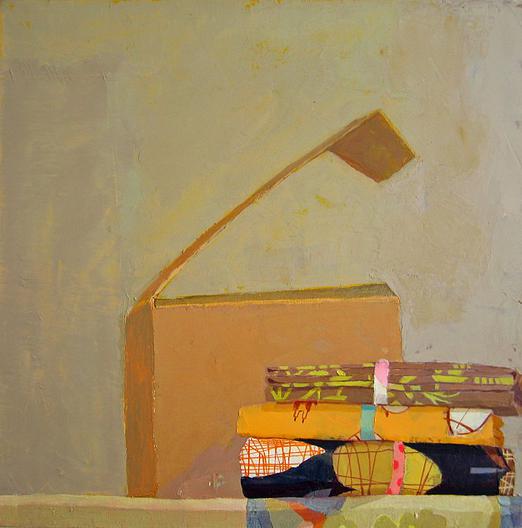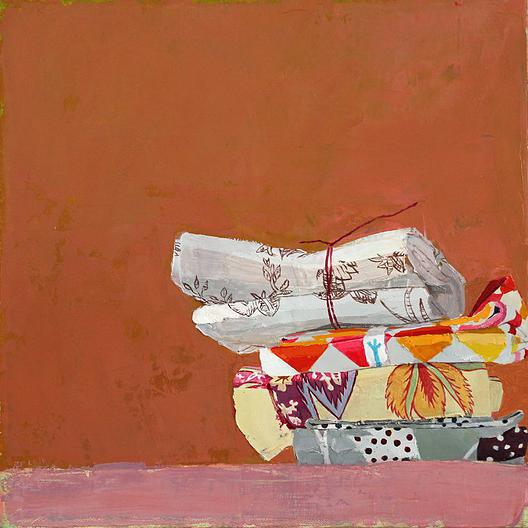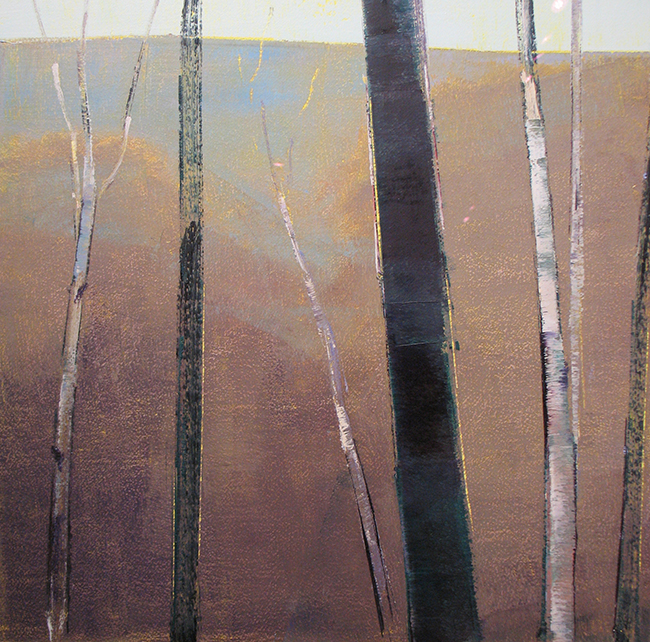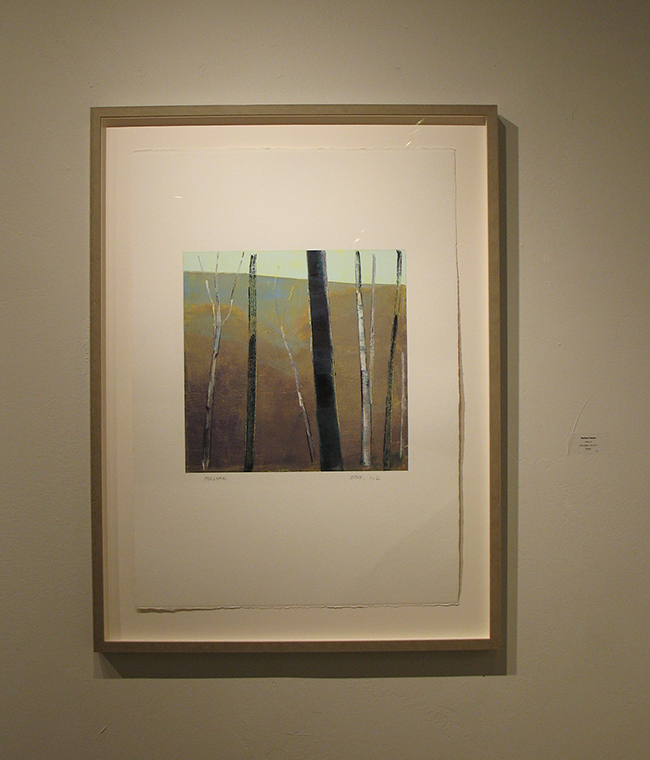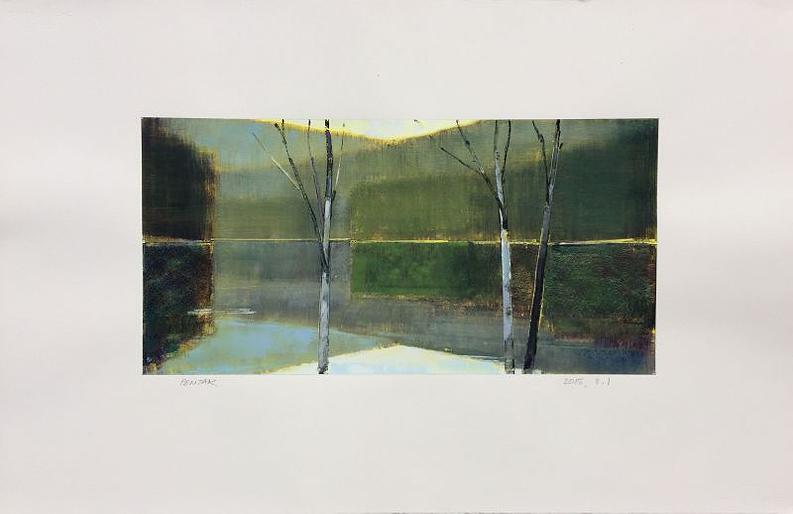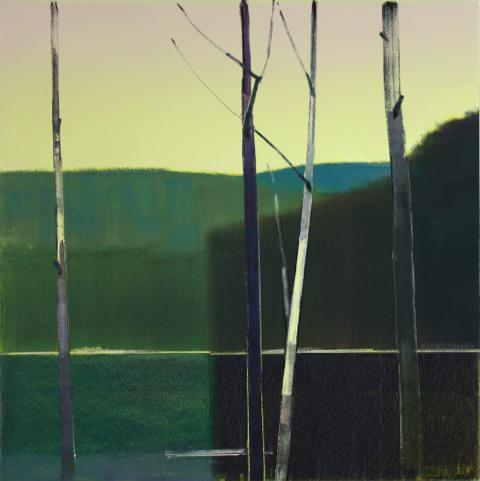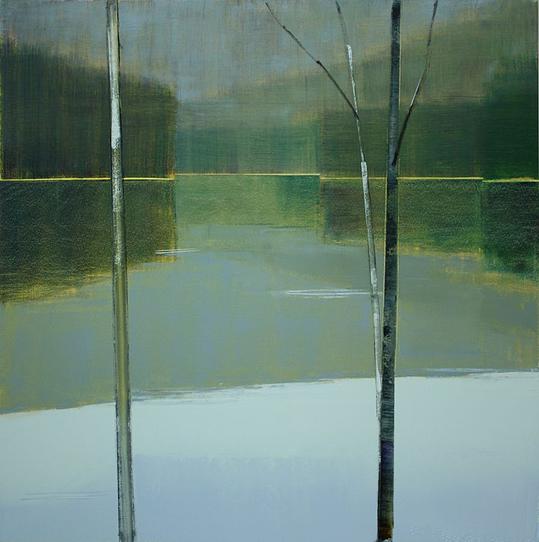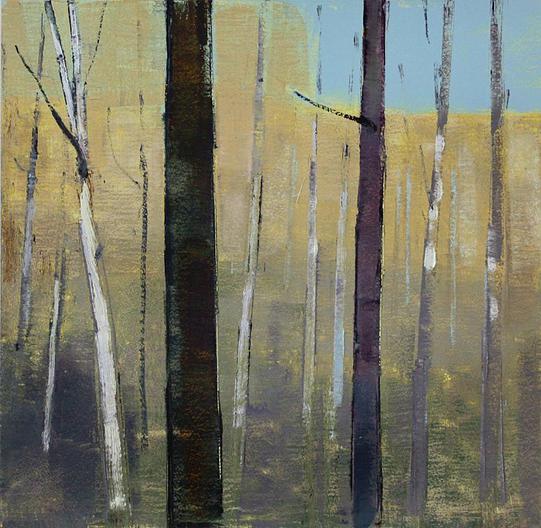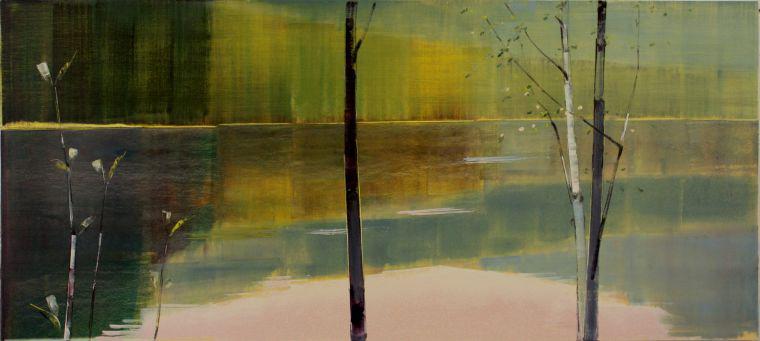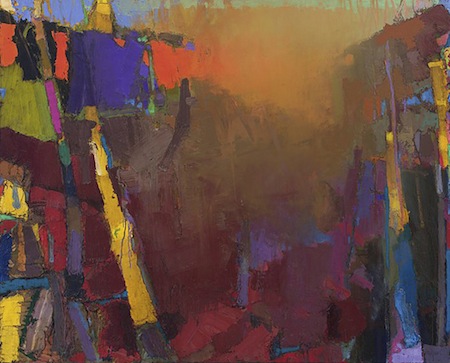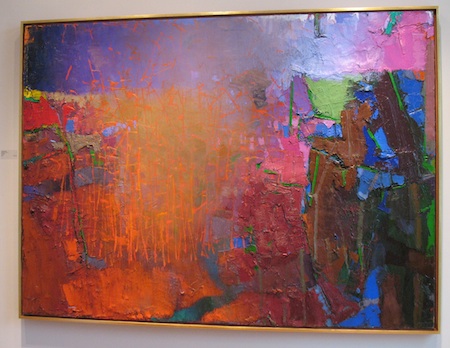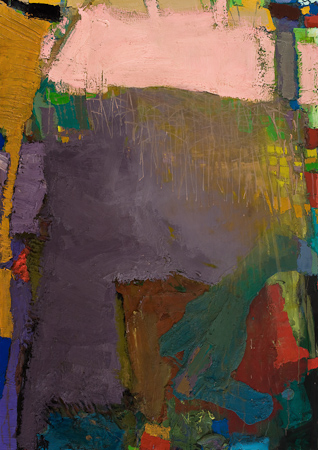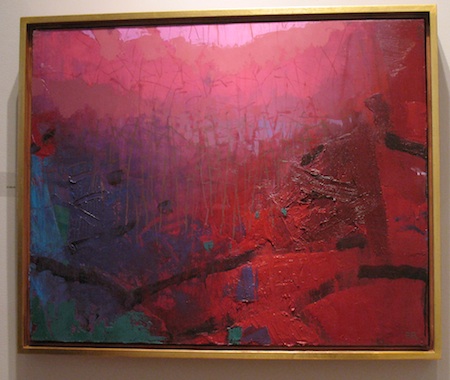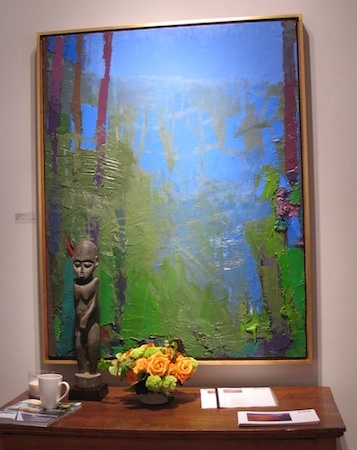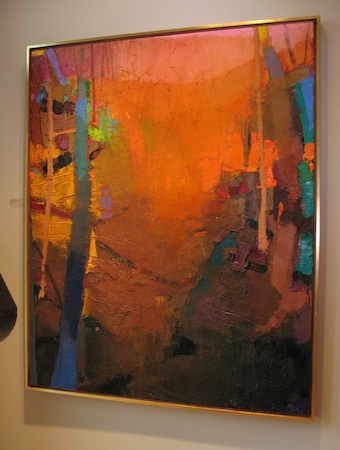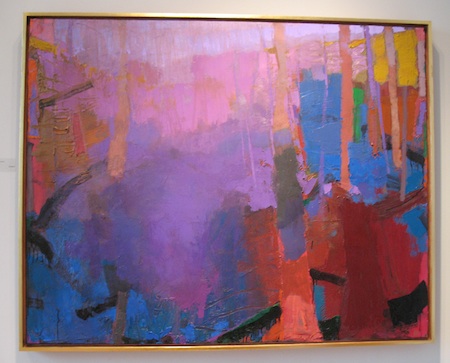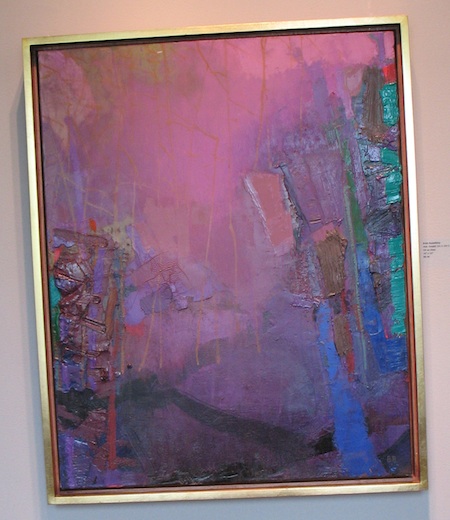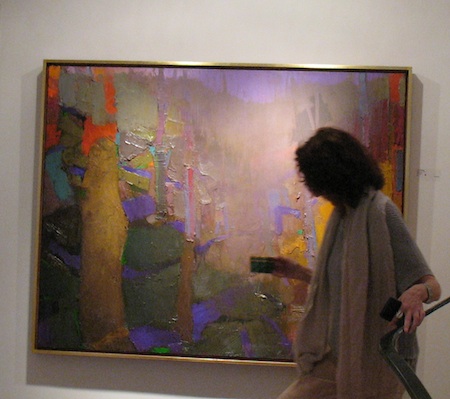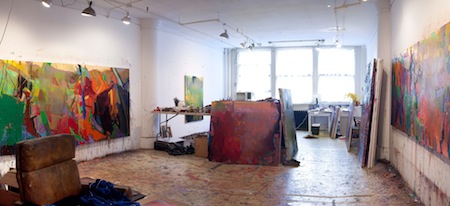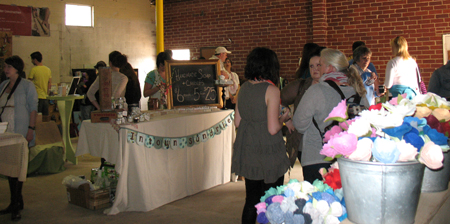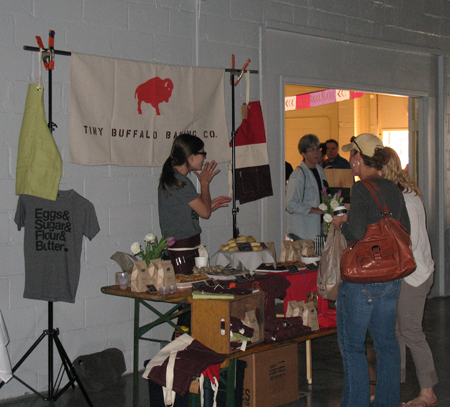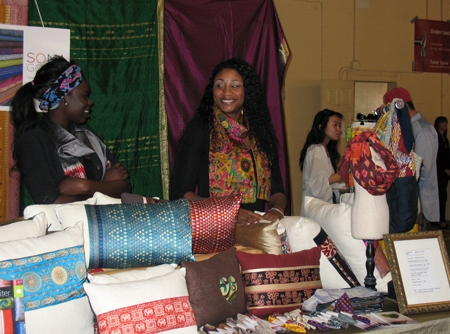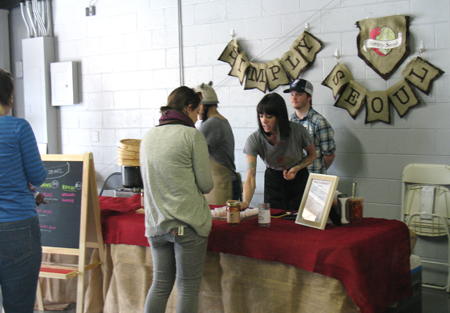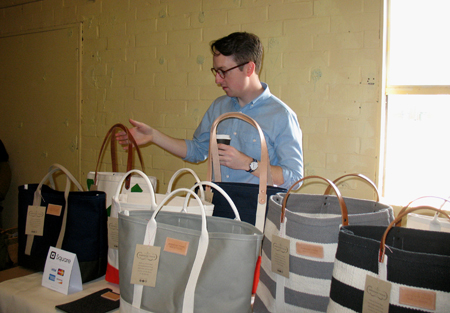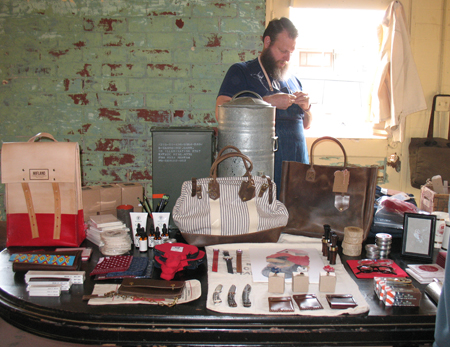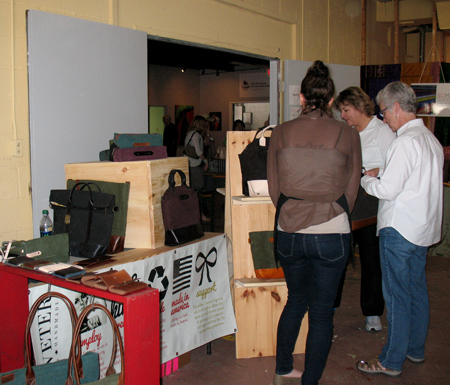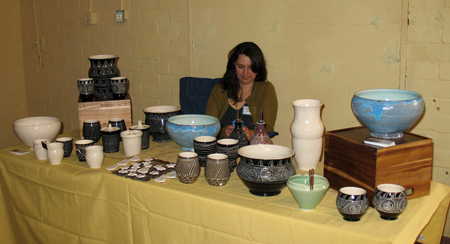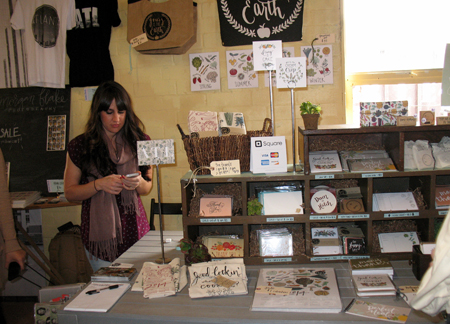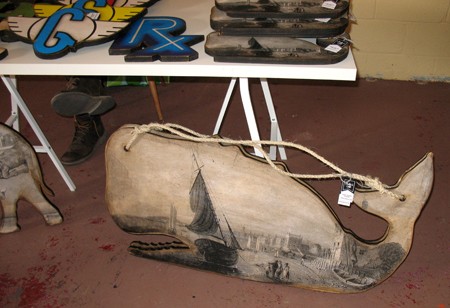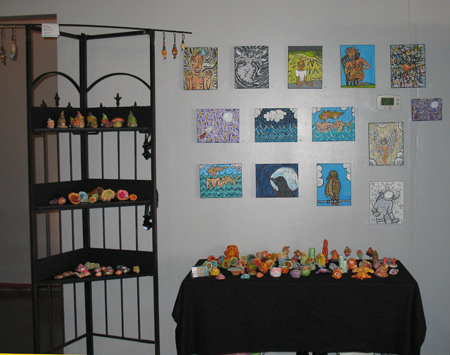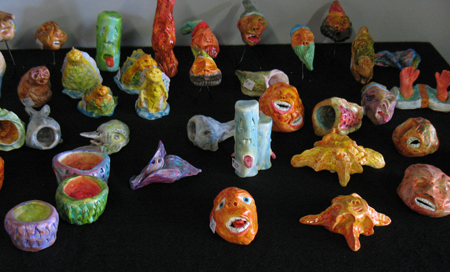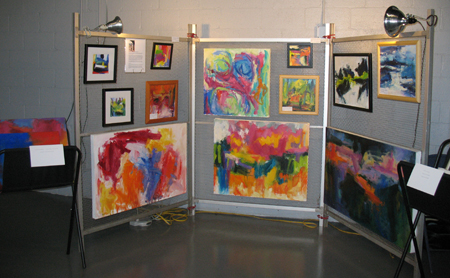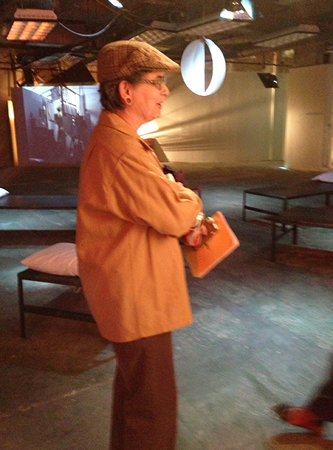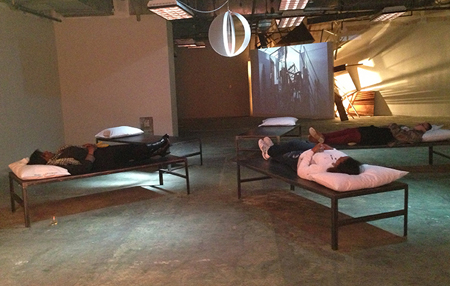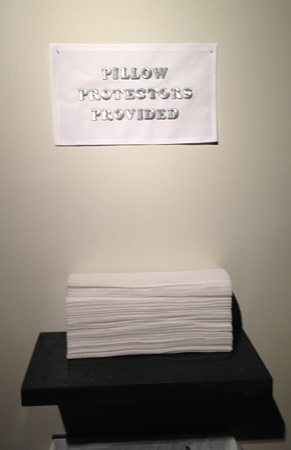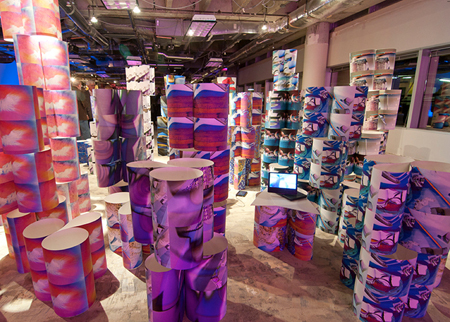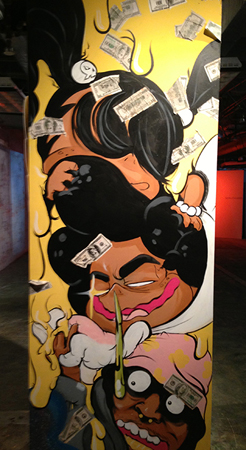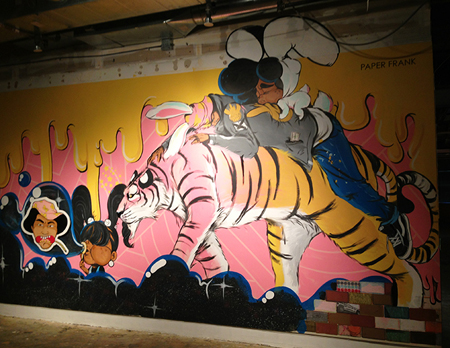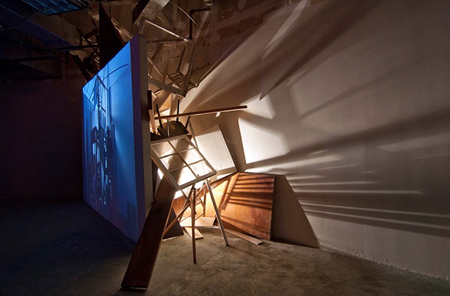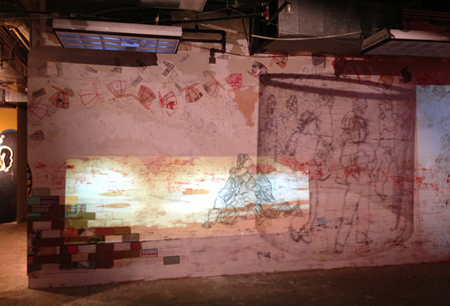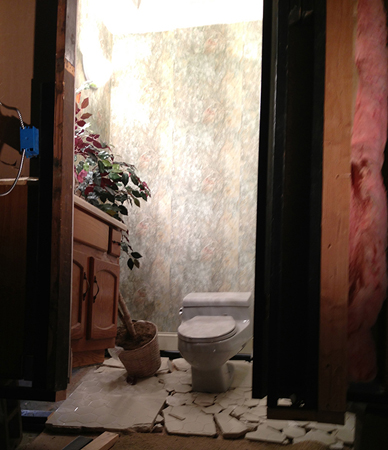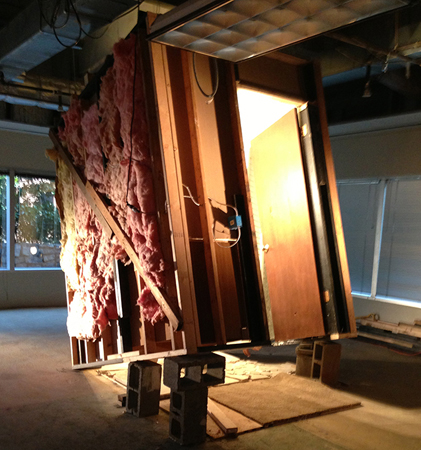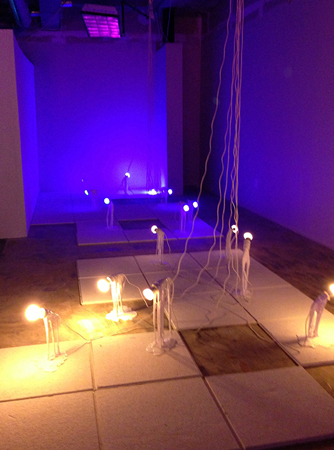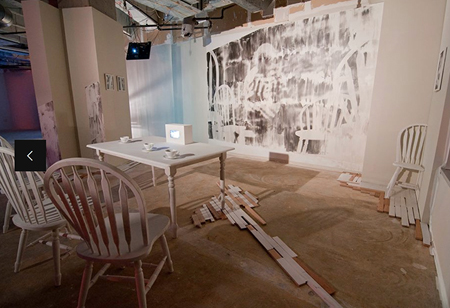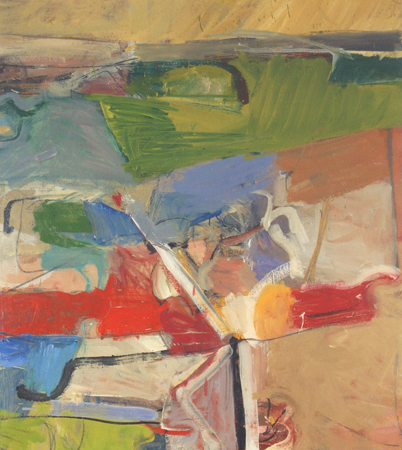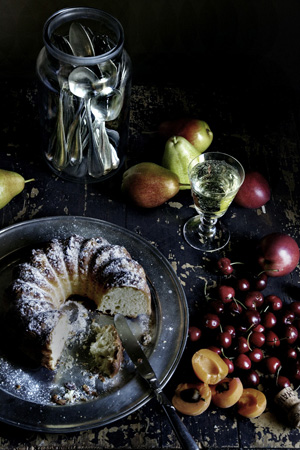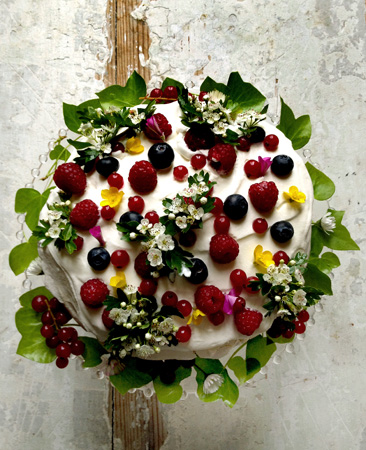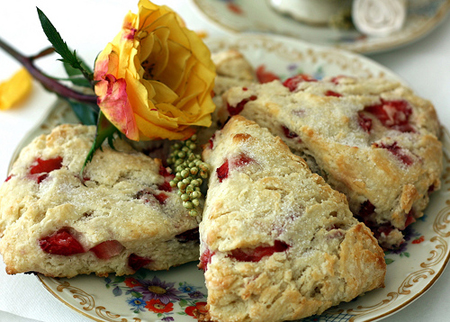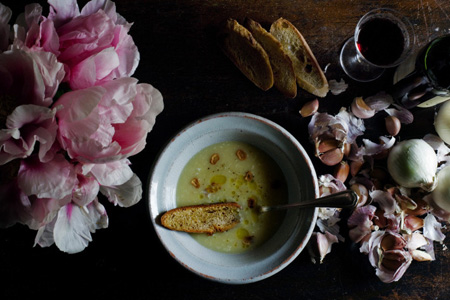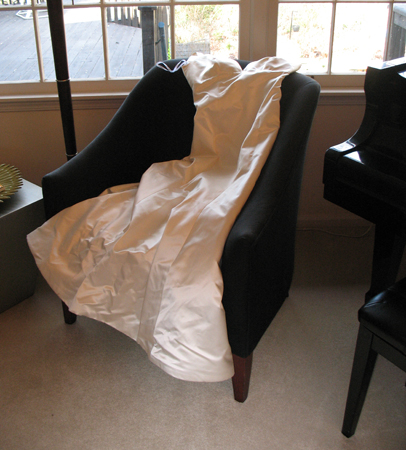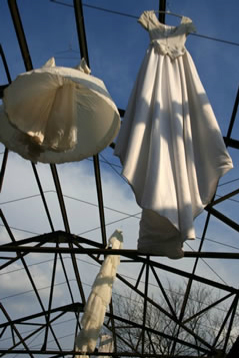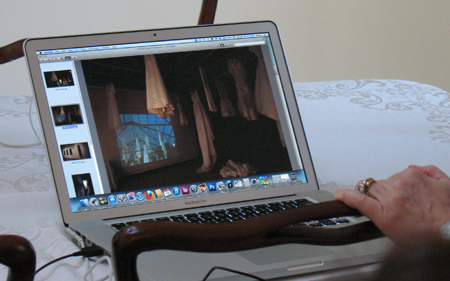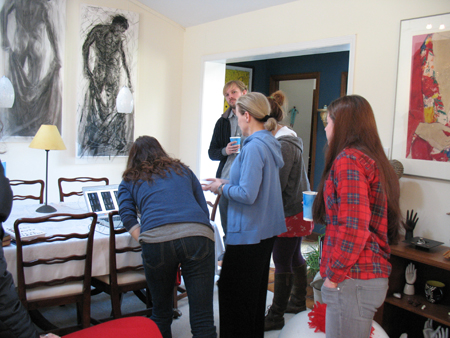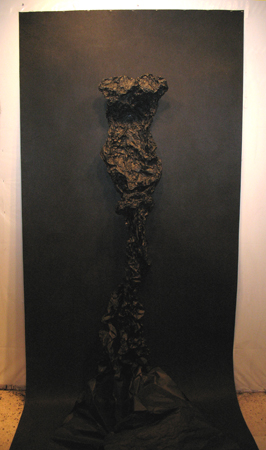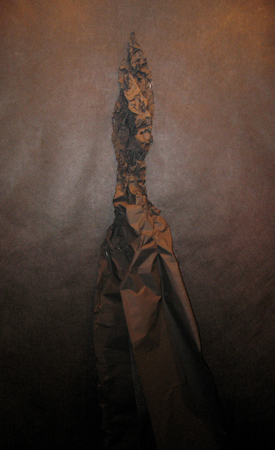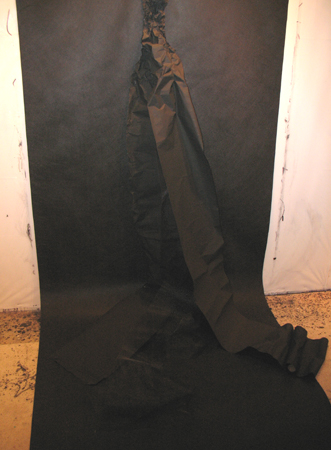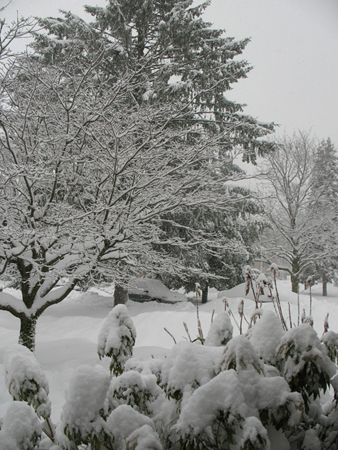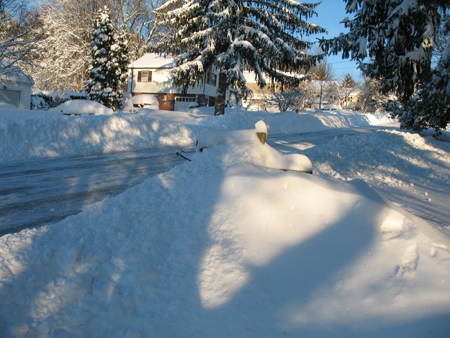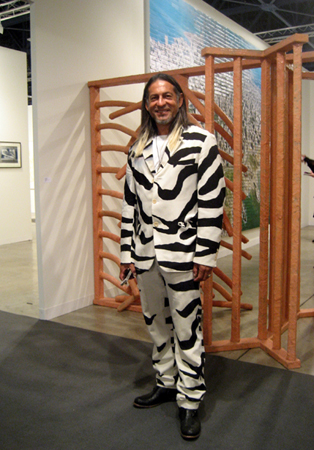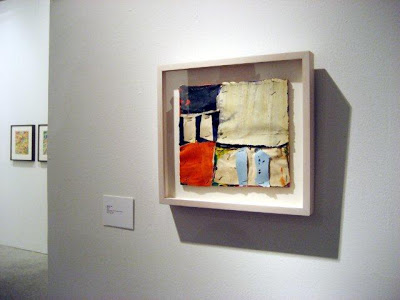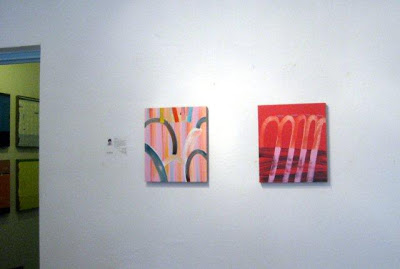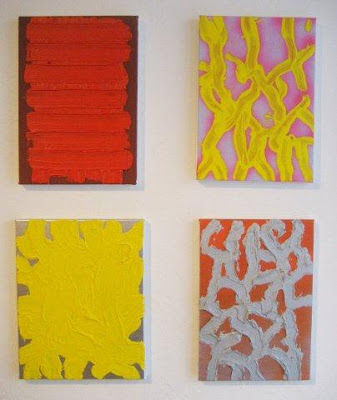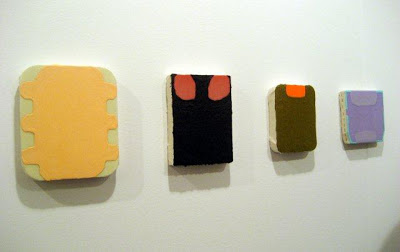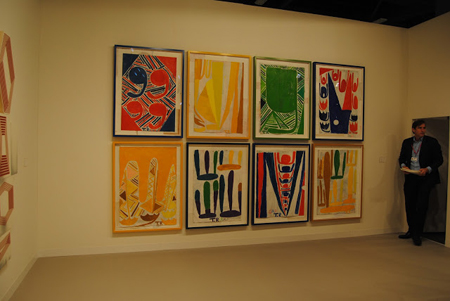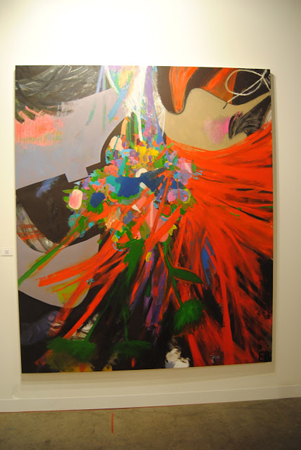I discovered the painter Sammy Peters during an Alan Avery gallery opening this past fall and mentioned him in the post that I wrote about it. His work stood out as pure, structured, and fascinating abstraction in the midst of the surrealistic and figurative paintings being shown. We exchanged some notes during emails and he agreed to an interview, included below. I’m excited to have the opportunity to meet him, he’ll be exhibiting his work at the Alan Avery Art Company in early March.
While abstraction has never receded much from the art mainstream (and as Jerry Saltz has claimed, ‘all two-dimensional art is abstract’), very few critics or writers have been able to adequately describe either the process or the final result. Donald Kuspit’s excellent essay on Peters’ work is one of the best I’ve read.
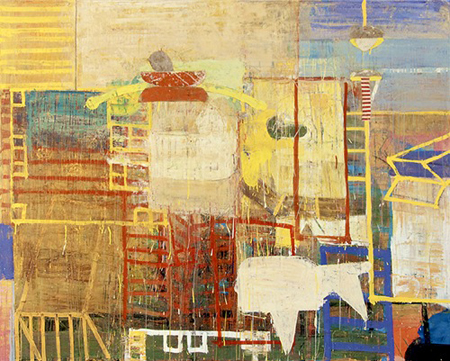
Forgotten: intermediate; enigma
48 x 60 inches, Oil and mixed media on canvas
What led you to become a painter?
SP  I grew up in an artistic household. My father was an artist and we had art materials handy. He had a sign business and that was his job and my sister and I would spend countless hours there watching him work, us playing with the tools of the trade. I would sweep floors and do general cleanup on weekends and after school. Most of my father’s fine art would be commissions that someone asked him to paint. I remember a great watercolor with a knight crouching behind a rock, ready to decapitate a 3-headed dragon – an illustration that he did for a bedtime story.
Can you describe how living in Little Rock, Arkansas influences (or doesn’t) your work?
SP  Most of it is unconscious. Arkansas is very humid and very green and to my eye it has a faint rose-colored tint that blankets everything. For example, when we visit Santa Fe or other destinations in the west that are high and dry, colors seem to be different, more saturated. I suppose that being away from the centers of the art world has its pluses and minuses. I seem to respond to the relative quiet and slower moving pace in Arkansas. I lived for almost a year in the San Francisco Bay area in the mid 1960’s, and found it difficult to paint there.
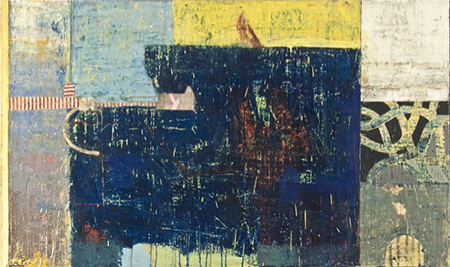
Primary: integrated; process
36 x 60 inches, Oil and mixed media on canvas
Describe your daily painting/working routine and what inspires you to paint a particular piece. Do you make sketches or draw on a regular basis?
SP I like to arrive at my studio relatively early 5 or 6 days a week and paint until I get tired, usually between 3 and 5 pm. I’m not an artist who likes to wait for inspiration to paint, usually the act of painting is my inspiration to keep exploring. I go through cycles where I like to paint large or relatively large (5×6’ or larger) and at other times the cycle of paintings gets smaller and smaller, down to 15×20 inches or so. The specific imagery of each piece develops during the process of painting.
In all but a few cases, I have no idea about the evolution of the image or where it’s going until I’m finished. I find that color seems to also work in cycles. Sometimes my palette is more neutral, at others it’s much more saturated with color. I do make sketches and draw.
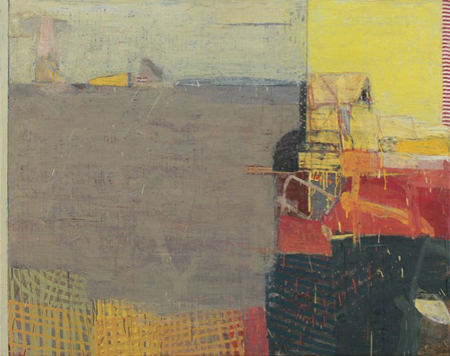
Determined: interlocking; identity, 2007
48 x 60 inches, Oil and mixed media on canvas
I am interested in the fact that you don’t offer an artist’s statement on your site. The catalogs and writings about your work have probably saved you from that exercise. Could you offer a brief idea of what you’d write in your own statement if you were pressed?
SP  I’ve never written an art statement that I was happy with. My very first one is embarrassing for me to read now. Very cocky and mocking some 1960 era artist’s pretentious statements. Maybe part of the problem is that I don’t think in terms of verbal solutions and planning ideas for paintings. Each of my paintings seems to be a cosmos of its own and when I try and put into words what my painting is about, I draw blanks. I also might find myself trying to make what I do sound intelligent and it’s anything but that. It is, I suppose, just something that I have to do. If pressed, I wouldn’t be able to explain my breathing or heartbeat. It’s just there. And besides, I have read very few art statements by other artists that I find interesting.
Recently I read this unattributed question on the internet: Â “If we can’t communicate persuasively what art means to us, how can we expect others to gain a clearer sense of why they should get more involved?”
I don’t think that it’s easy, but I do think clear writing is something that artists should aspire to. Good artist statements are few and far between.
Peters wrote the following in 2007 and suggests it was the last statement he has written. He says: “I don’t think it adequately describes what I do in those hours alone in the studio with my thoughts.”
Sometimes I see painting as a car or vehicle. The painter serves as the vehicle designer/mechanic. The purpose of the vehicle is to take the artist where she needs to go to find answers to her questions. Paintings by other artists as well as nature are signposts that suggest to  the artist/mechanic possible routes to take and which to avoid.  It seems to me the more illustrational the signposts, the more likely that they will always have the same information; that is, seen from the early viewing and not adding to the information later in the artist’s life.
The artist is seeking sources for answers regarding life structures. The car can take the artist to the sources. The better the artist builds the car, the better she drives the car and the more she regards the signposts in a highly perceptive state, the closer she comes to the clarifications she’s seeking.
You’ve mentioned that Diebenkorn was a strong influence, but that deKooning is your favorite Abstract Expressionist. I see more of Diebenkorn’s formal compositional structure in your work, there seems to also be an effort at opening up a space in many of your works – kind of like the windows in Matisse or Bonnard’s works. Can you talk about the context of the paintings and any ideologies you may have as an artist? And are there current painters whose work excites you?
SP  The Diebenkorn/Matisse connection was one that I recognized very early on and I’m sure you are right about me finding a way to utilize compositional structure the way that Diebenkorn understood Matisse’s structural devices. For me, DeKooning was the pick of the litter of the New York School of action painters. Whether he’s an influence I’m not sure. Over the years I’ve liked a number of current painters, but none quite as inspirational as those that I discovered in my youth. I like Sean Scully and Anselm Kiefer along with some of Gerhard Richter’s and Sigmar Polke’s work. But I also don’t have a lot of time to look at other artists work. Yesterday, a friend sent me a list of current kitsch influenced painters to discuss and I hadn’t heard of or at least couldn’t associate an image to most of their names. When I was younger, I knew the work of most of the then current painters.
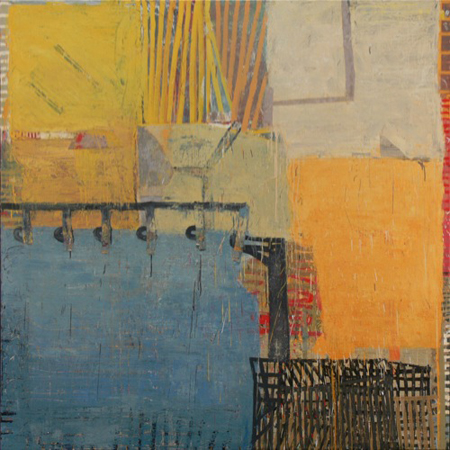
Acceptance: contrasted; conflicts, 2007
72 x 72 inches, Oil and mixed media on canvas
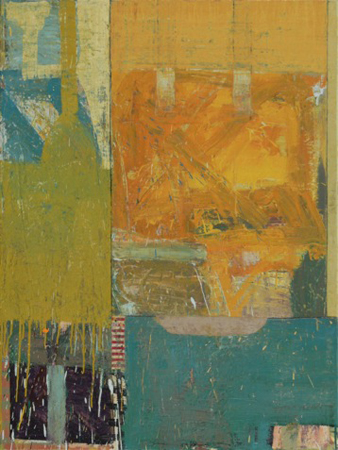
Material: reality; transformation, 2007
40 x 30 inches, Oil and mixed media on canvas
I also notice that yellow is a recurring color in your palette, it figures prominently in many of your recent works, mixed with white or orange. From 2001 to 2005 black seemed to be predominant in areas or as an accent. Any comments on your choice of palette or how it has changed over time?Â
SP Â I mentioned how my work seems to evolve in cycles. It has been that way since the beginning. Black is one of my favorite colors and lately I seem to use a lot of yellow, as you mentioned. Blue over the last few years keeps showing up, white is a regular in my palette. I use a lot of colors that are hard to describe; some might call it mud, I would say a greenish red, or a purplish yellow. Putty is a nice shade of gray.
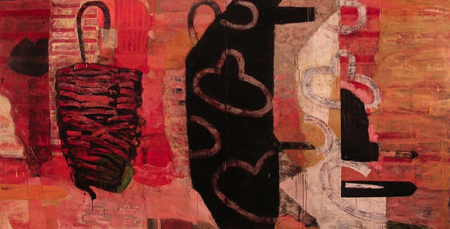
Recognition: presence; concealed, 2005
84 x 168 inches, Oil and mixed media on canvas
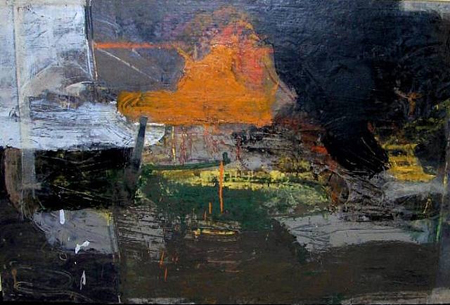
Engage: Form, Contradiction 1992
33.5 x 49.8 inches, mixed media on canvas and wood
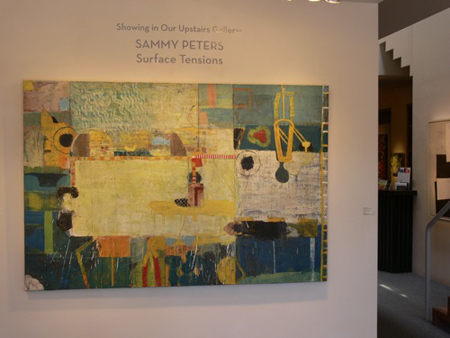
Have you been able to make a living solely from your painting? I have read that you took over your father’s sign business beginning in your early years, and that obviated the need to make a living with your art, which must have been an exceptional freedom. You also refrained from moving to NYC, like so many artists. Another stroke of possible luck, in that it allowed you to concentrate on your voice alone and not be distracted.
SP  I’ve been making a living on my paintings for less than 10 years. I’ve maintained a studio most of the time since the early 1960’s. Occasionally, I shared a studio with another artist. I think it did give me a sense of freedom knowing that I could raise a family without worrying about sales of the paintings. I don’t really spend a lot of time thinking about “what if?â€. I do try to make forays from time to time to New York, but I usually don’t look at new painting when I’m there. I keep going back to the Met or to MOMA and see works that I’ve seen many times.
You approached galleries at a later age than most artists, with a business sense defined by your ‘day job’. What advice would you give to young or even older emerging artists who may not yet be represented by major galleries?
SP  Most of the younger artists seem to be savvier about the use of technology to help further their careers. I didn’t try to market my work until the early 1980’s and the era was entirely different from the way things are today. I’m sure I could learn more about web sites and blogging and it might be helpful in getting my work to a larger audience, but I can’t seem to find the time. I found it more difficult to try to market my paintings than anything I had ever done before. I guess because it is so personal. Today we can visit many galleries online in various cities and see their stable of artists. If a gallery specializes in prints and photographs and you are a painter, then you’d know not to present your work to that gallery. There are also online artist development sites that cater to artists who are trying to break into the market; some are pay sites but some offer free advice. Some galleries will give a certain protocol for their submissions, accepting them at certain times during their year. It’s a must to have a portfolio of your work and my best advice is to utilize the most professional format one can, for making a presentation of the work.
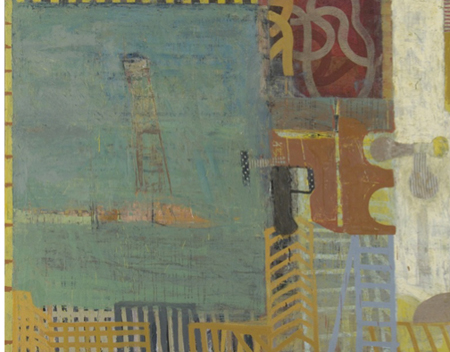
Question: articulated; experience
48 x 60 inches , Oil and mixed media on canvas, Courtesy Alan Avery Art Company
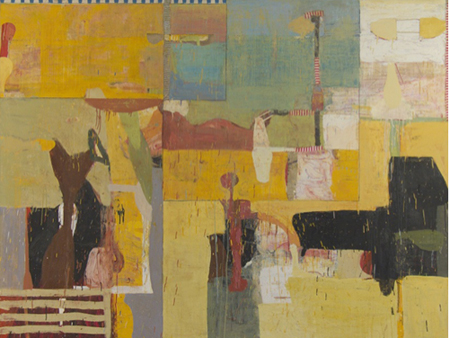
Nurturing: forgotten; presence
68 x 90 inches, Oil and mixed media on canvas, Courtesy Alan Avery Art Company
I have heard young (especially male) artists say that they “just want to kick his/her buttâ€, a reference to aspiring to be better than either their artistic idols, or the current art stars. Usually this comment can be interpreted to mean creating something new – what hasn’t ever been done before. That’s quite a challenge for painting. Perhaps you could talk about the gallery scene in recent years. In one interview you suggest that someone who is continually “searching out the new as a constantâ€Â could be characterized as “…having a shallow or neurotic approach to life.â€
SP  I could have phrased that more gently. There’s nothing wrong with “newâ€, it’s just that if novelty and innovation are the goals of the art world/ gallery/museum systems today and artists invest in that concept, it breeds shallowness and seems neurotic to me. It’s a tall order simply to be a serious artist and always has been. I remember a Brahms quote; “You will never know what it’s like to work with the tramp of Beethoven behind you.†I understand where the “butt kicking†impetus comes from and when I was younger, I’m sure I said similar things. Our lives and technology are moving faster and faster and I think it’s speeding up the “recognition to adoration to repulsion†quotient as it applies to art.
You’ve talked about losing your ‘rhythm’ when you were jumping back and forth between abstraction and figurative painting during your children’s formative years. And you’ve also mentioned that many painters evolve a stylistically serial result, whether that’s intentional or not. How do you approach painting now that you’ve developed a larger body of work?
SP  Diebenkorn and Guston come to mind as artists who bounced back and forth between abstraction and figurative. My loss of rhythm was mainly the result of a 7-year hiatus during the 1970’s. When I stopped, I had been doing figurative work for less than two years, during the previous ten years I had been painting abstractly. I just wasn’t sure where my time in the studio would be spent. I had to see where the brush took me.
Some artists suggest that the studio is too private for them, that they require a social forum for their work. Does networking with other artists and developing community have much bearing on your life as an artist and if so, how does it inform your work and process?
SP  I think it’s entirely personal. I have a need to be alone in the studio for long hours and can’t imagine my lifestyle any differently. I do have artist friends, and locally we meet for lunch about once a month. I try to answer emails and keep in touch with galleries and friends that I’ve made in communities where I show my work. But what I do is very removed from networking.
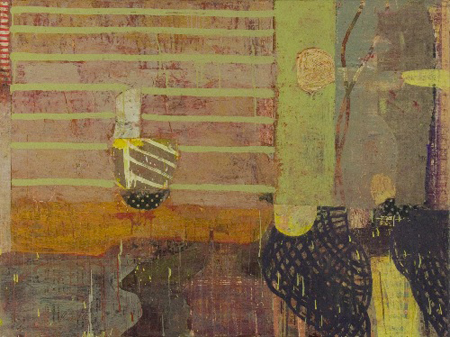
Synthesis: internal; completion, 2009
30 x 40 inches, Oil and mixed media on canvas
I’m always curious about how painters are utilizing social networking. I know painters who have been successful marketing their work online, even while they’re represented by a gallery. You obviously have a website, but have you explored some of these or other alternative ways to either exhibit or sell your work?
SP  No, I’ve never tried to market online. I’m curious about it and I know there are artists who are well versed in marketing that way. I know that the brick and mortar galleries also use an online presence to help market the artists that they represent, and I imagine that trend will increase as time goes on. I’d love to have a crystal ball and see what place all this will have in the future.
Any immediate plans for exhibits and/or the next series of work?
SP  I have a show at Atlanta’s Alan Avery Art Company in early spring, the opening is March 8th and I look forward to seeing the city again. I’m also looking forward to a show at LewAllen Galleries in Santa Fe in June.
You can view more of Sammy Peters’ work at his website.
